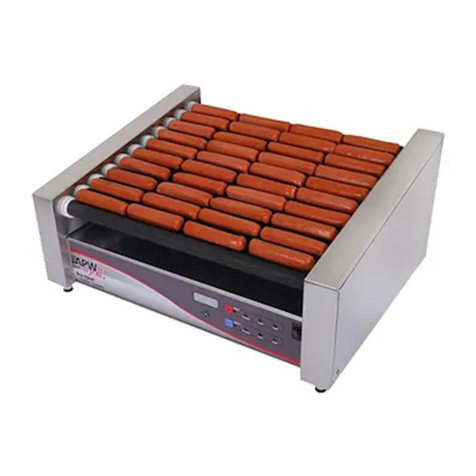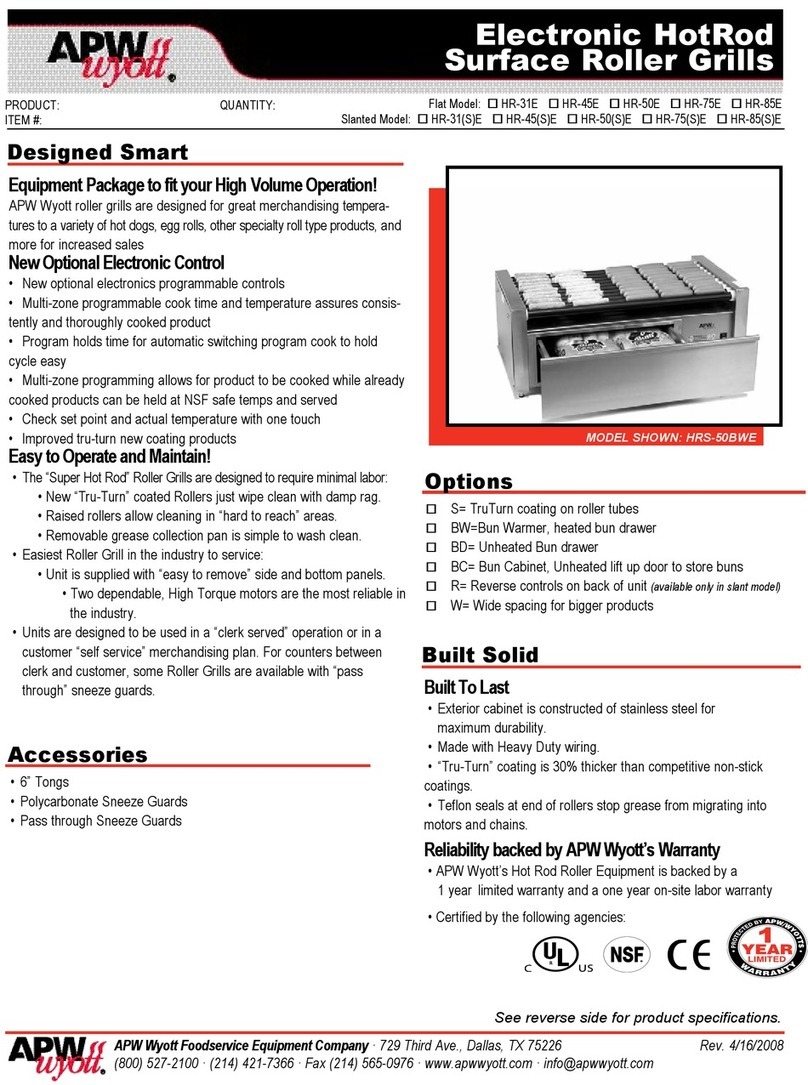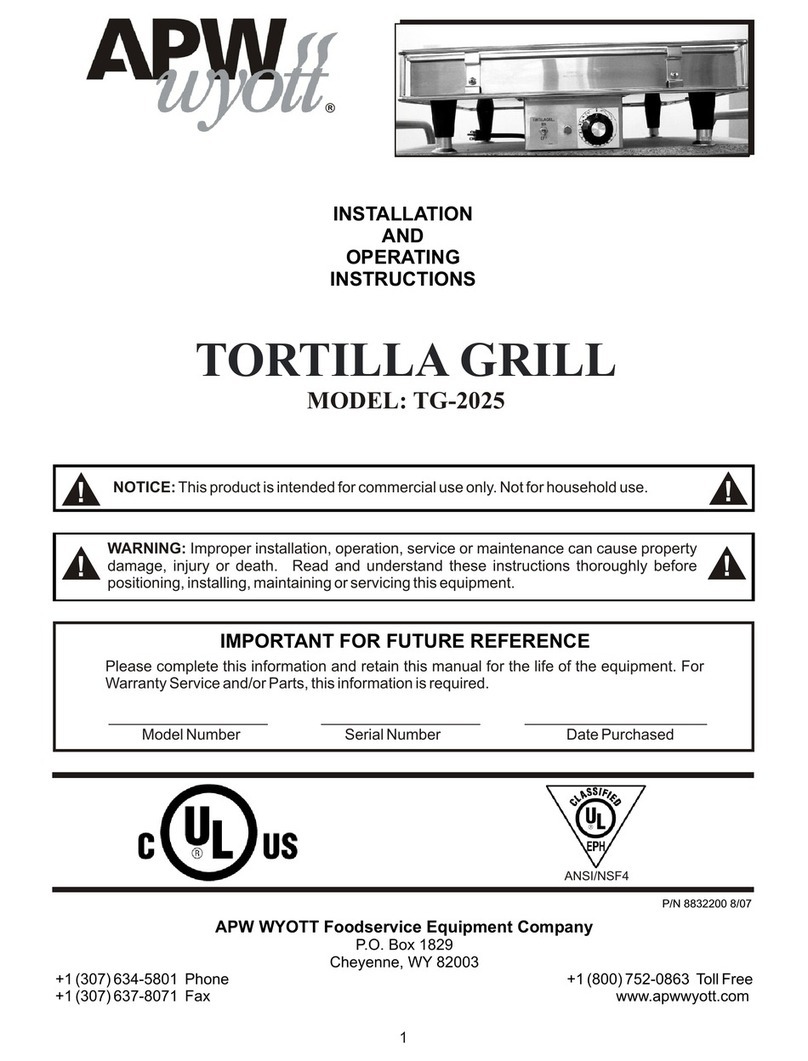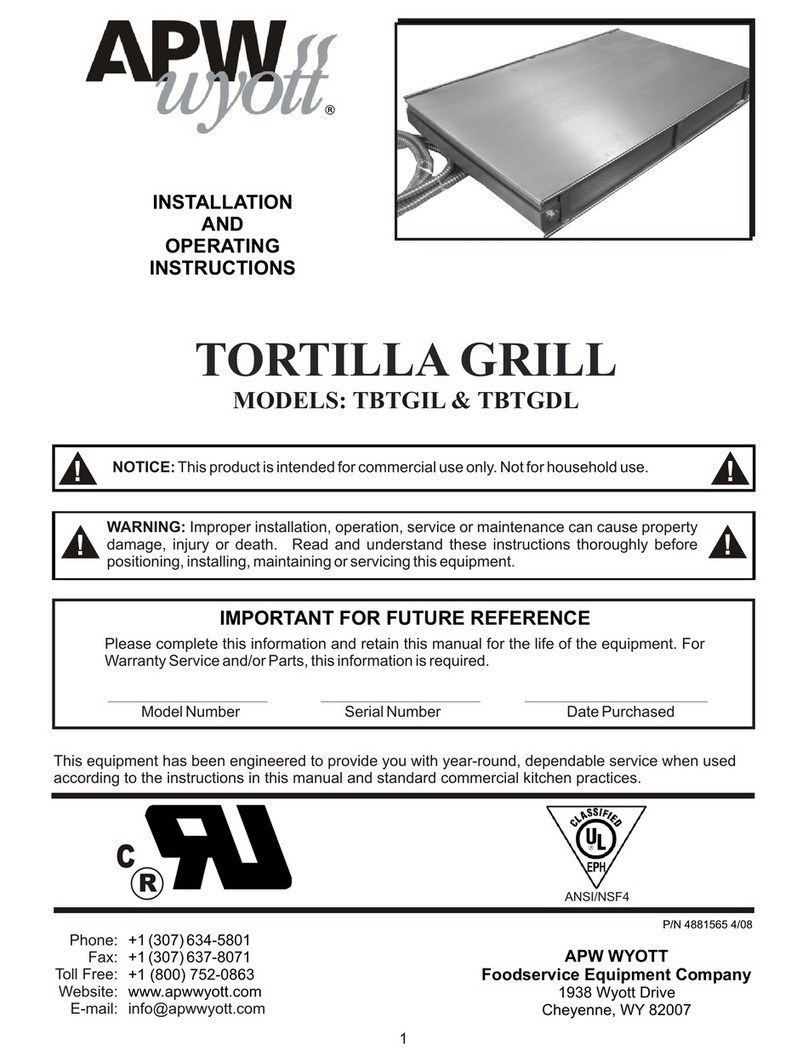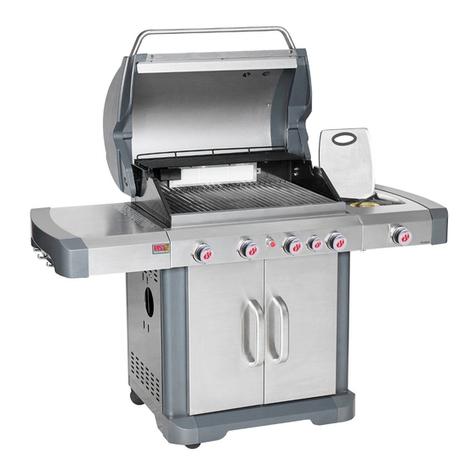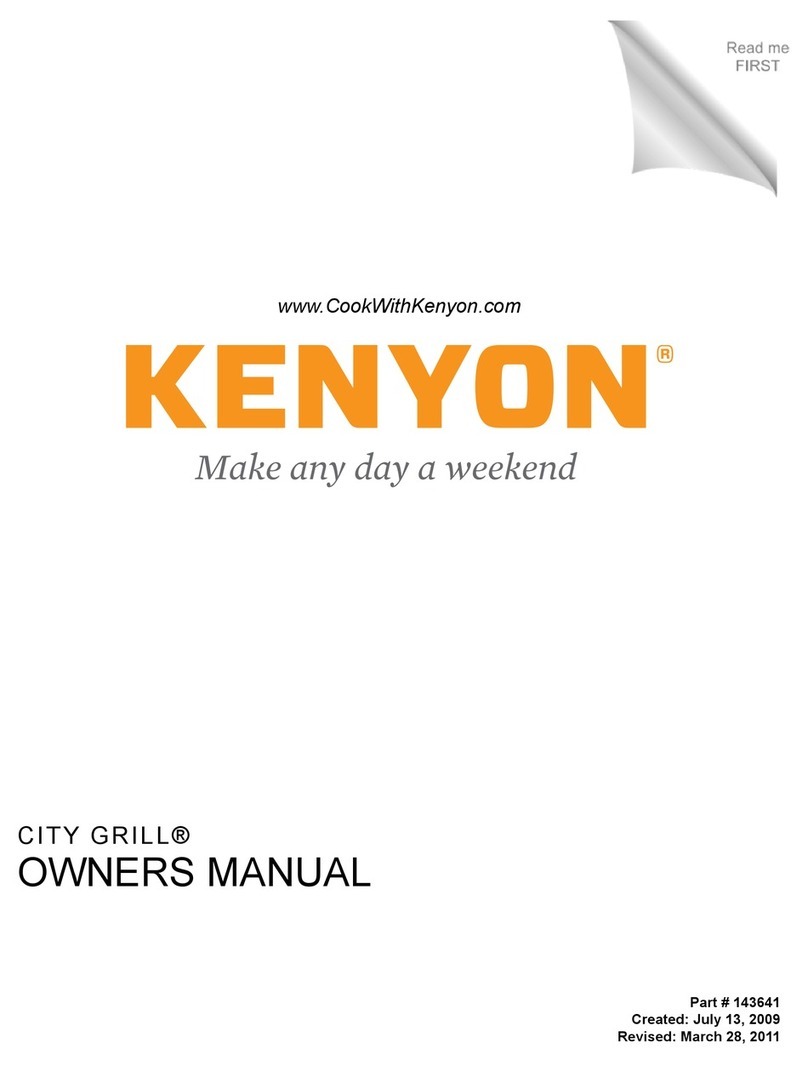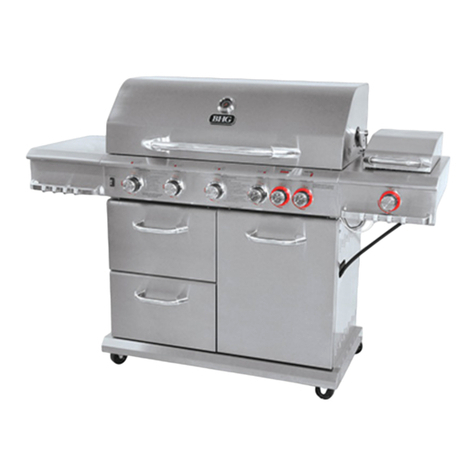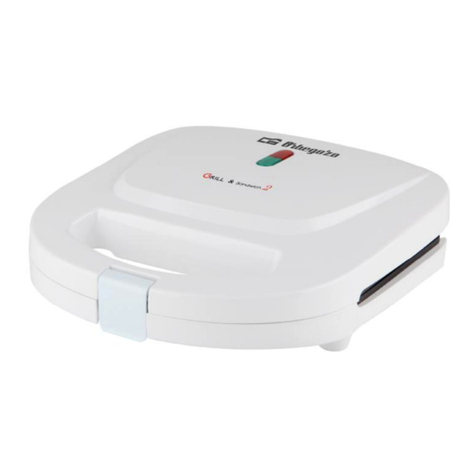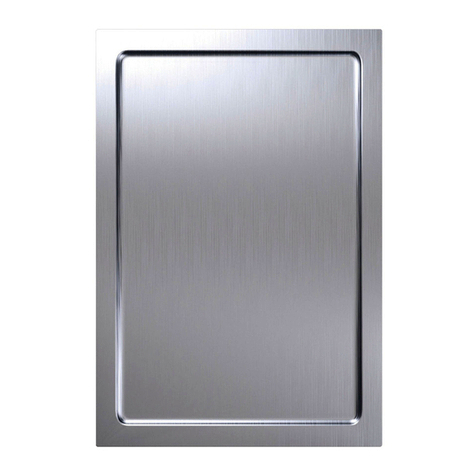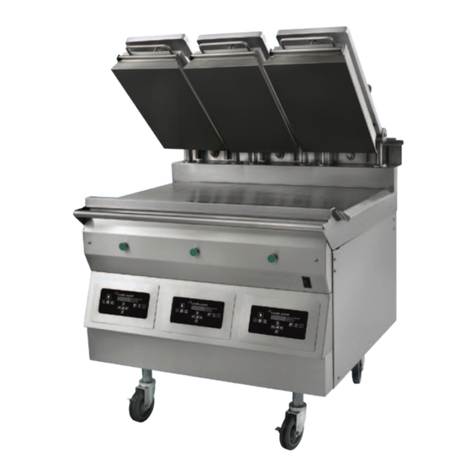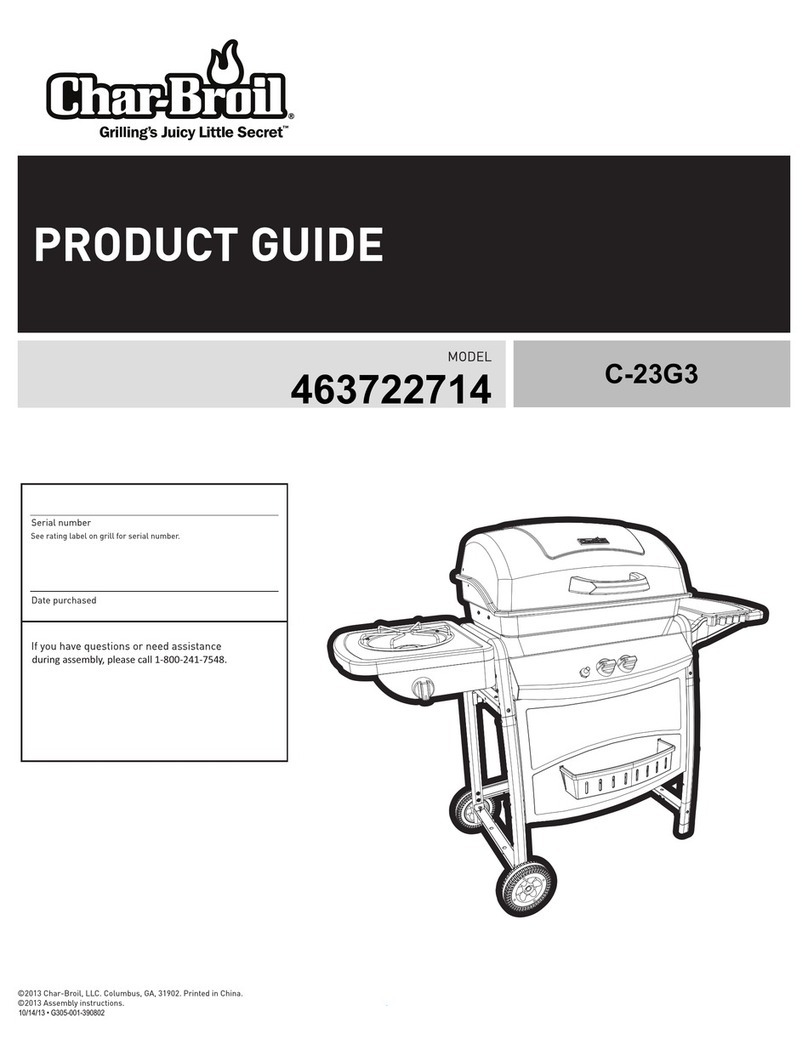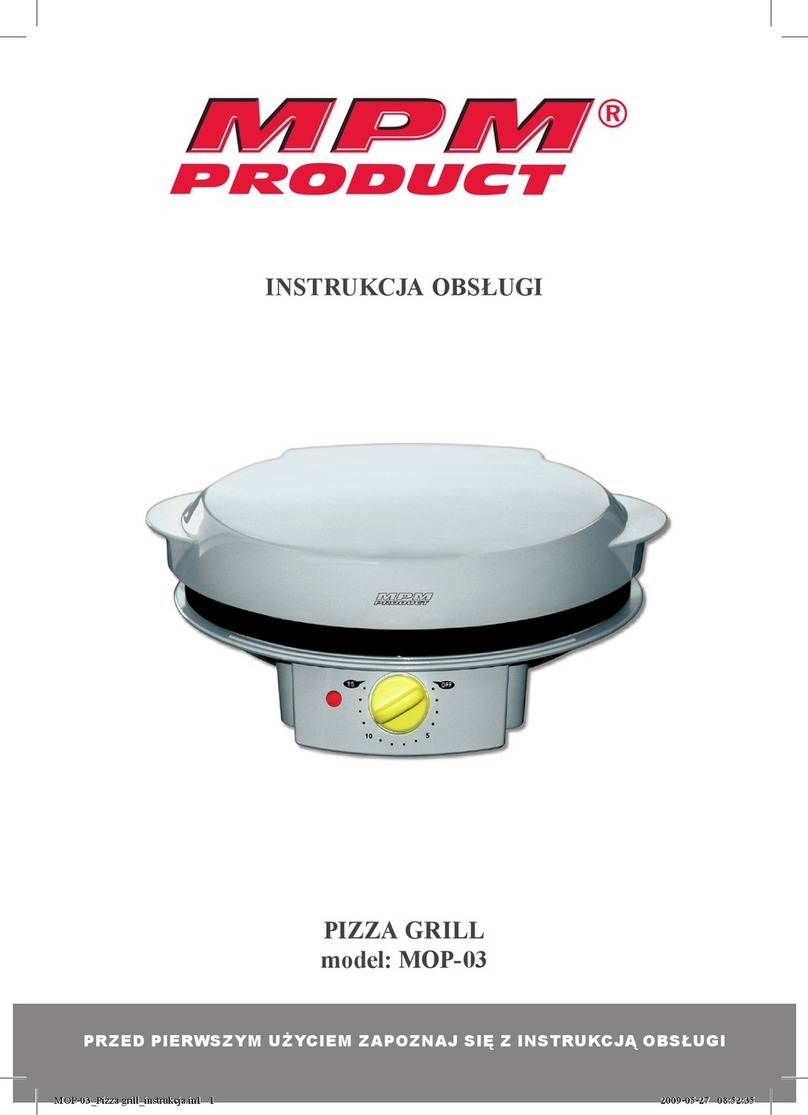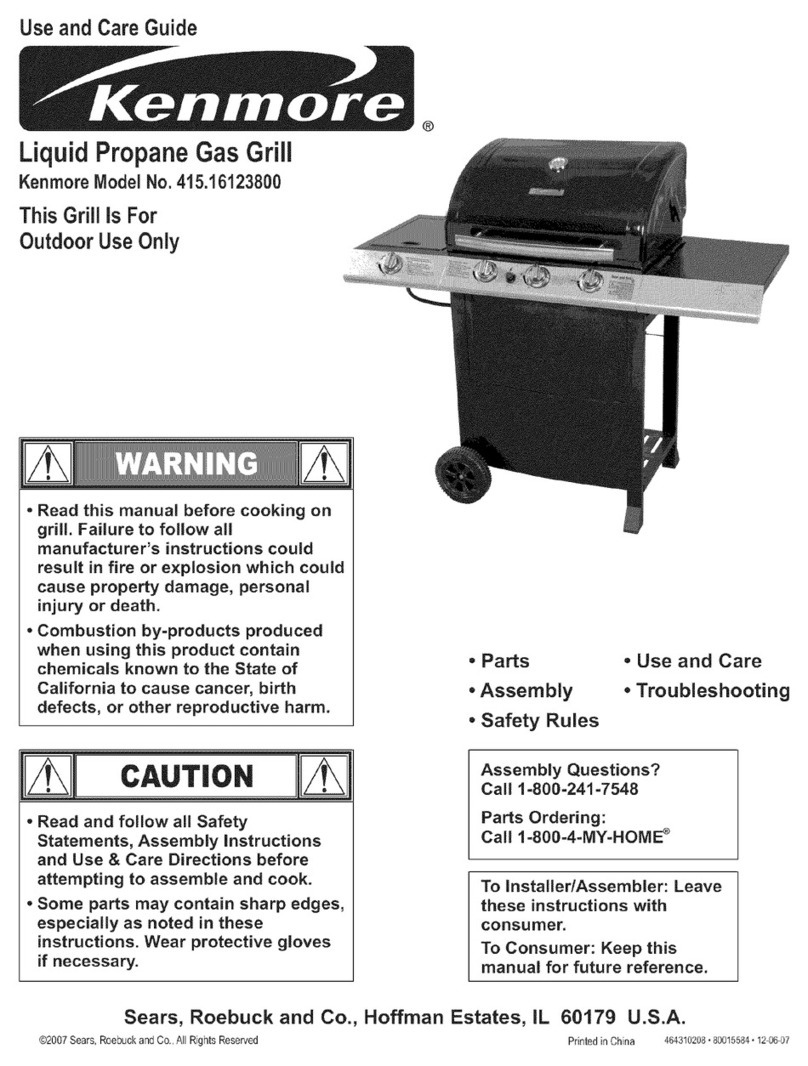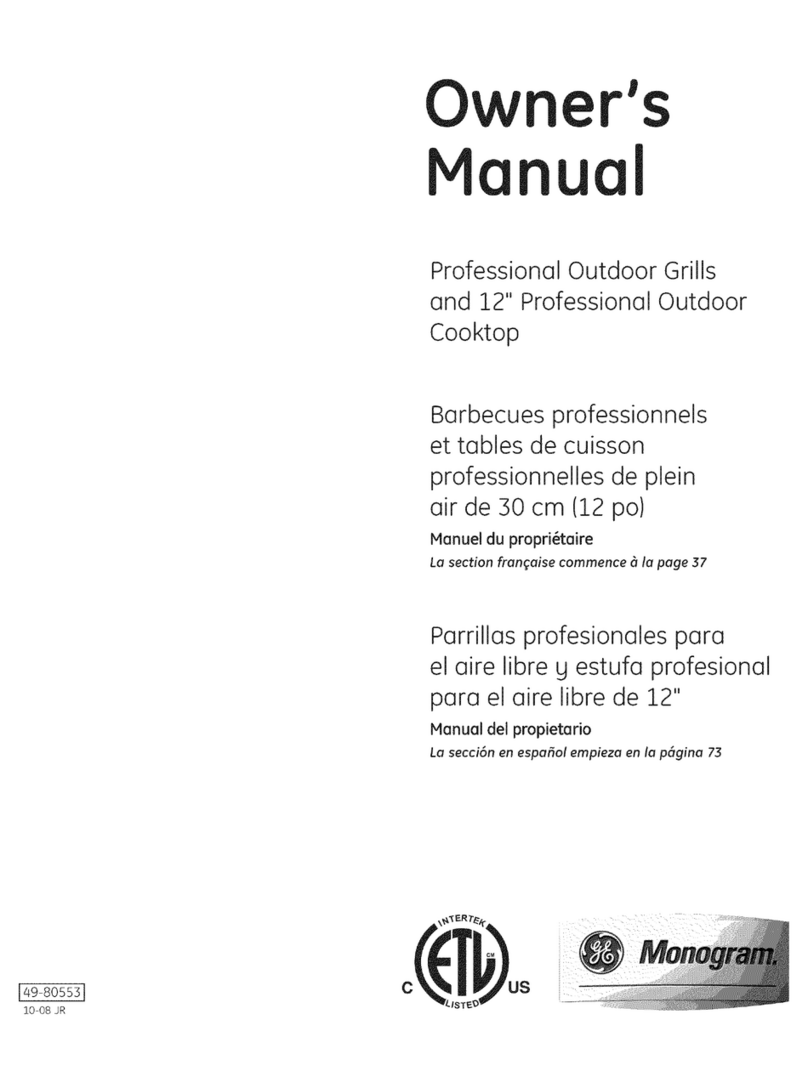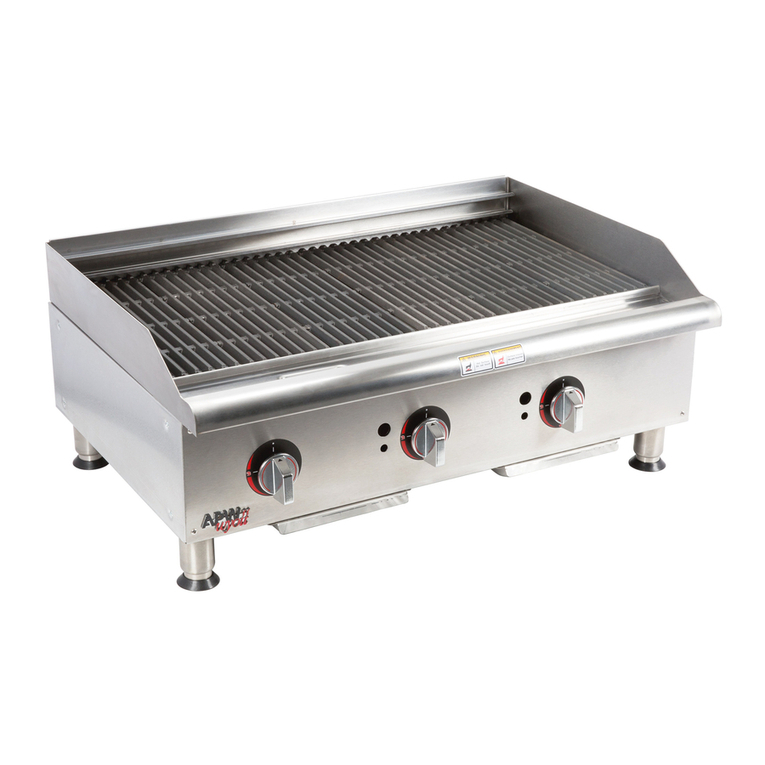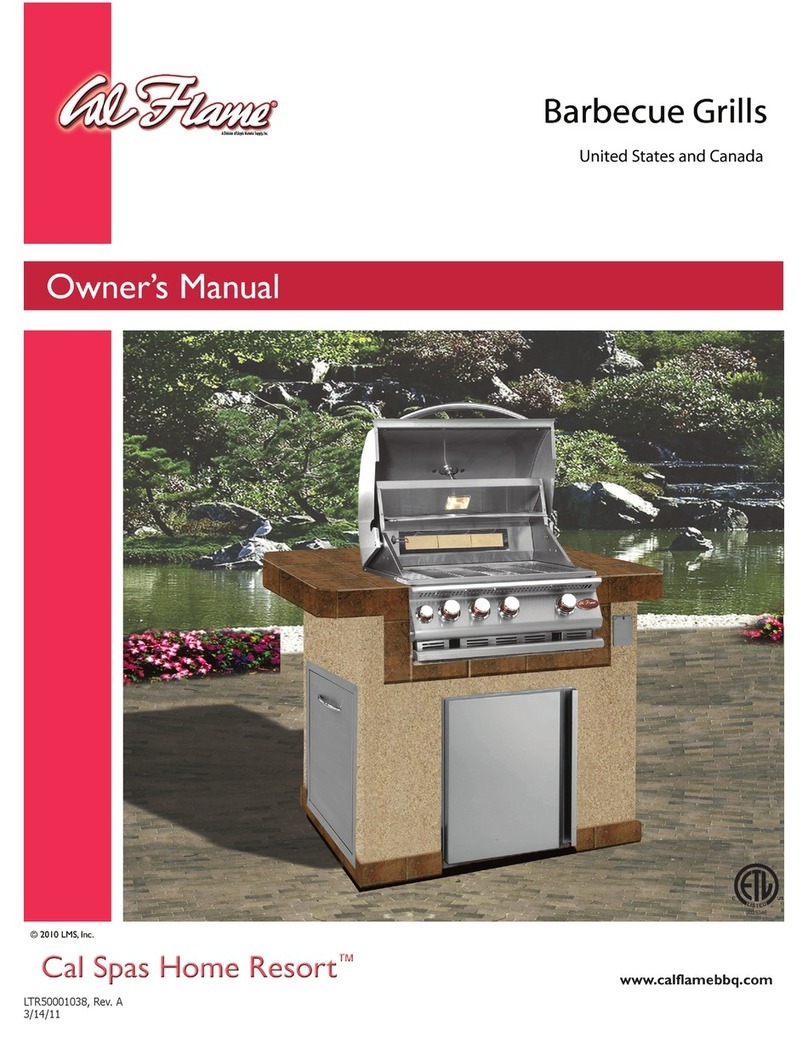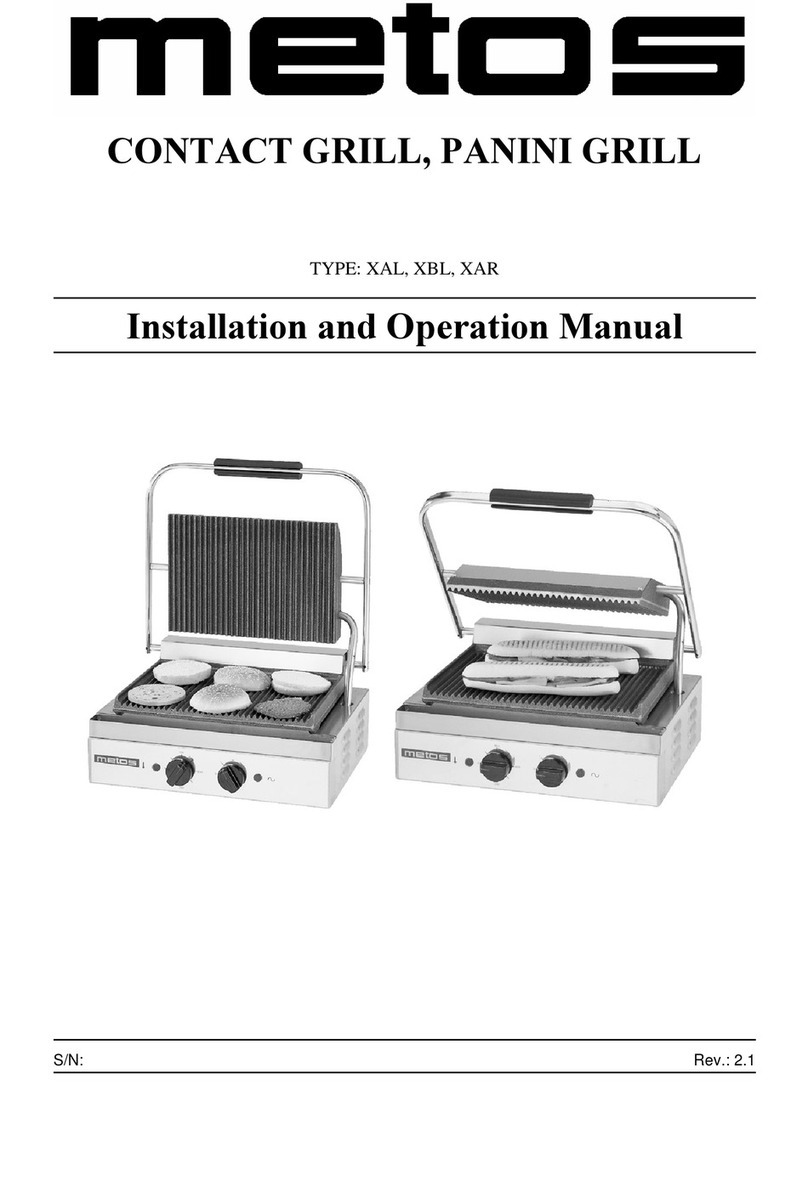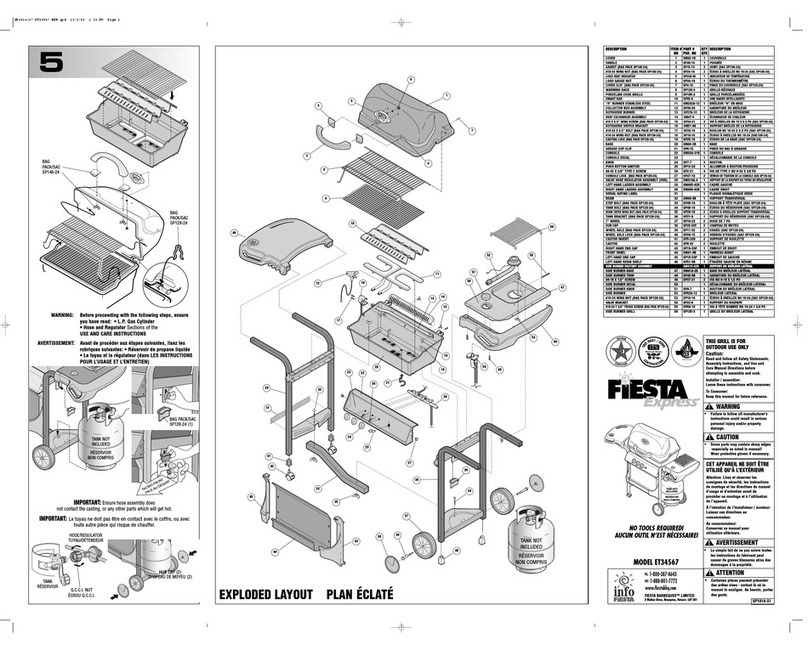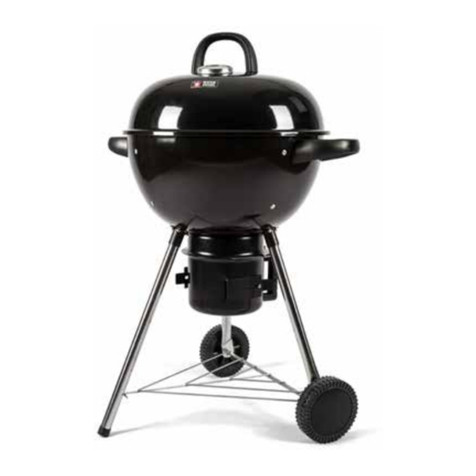
GENERAL INSTALLATION INSTRUCTIONS
Ensure gas supply and gas type, as shown on unit nameplate agree.
Unit installation must conform with the National Fuel Gas Code, ANSI Z223.1/NFPA 54, the National Gas
Installation Code, CSA-B149.1, or the Propane Installation Code, CSA-B149.2 as applicable and in
accordance with local codes.
Screw legs into the permanently fastened nuts on the four corners of the unit and tighten by hand. Level the
unit by turning the adjustment screw at the bottom of each leg. Do not slide unit with legs mounted, lift if
necessary to move unit.
Pipe threading compound must be resistant to the action of liquefied petroleum gases.
Caution: DO NOT use an open flame to check for leaks. Check all gas piping for leaks with a soap and water
solution before operating unit.
THESE UNITS ARE SUITABLE FOR INSTALLATION ON NON-COMBUSTIBLE SURFACES ONLY.
Noncombustible clearances:
0" sides (0 mm) 0" rear (0 mm) 4” floor (102mm)
Do not obstruct the flow of combustion and ventilation air, under the unit by the legs or behind the unit by the
flue.
Adequate clearance for air openings into the combustion chamber is required. Do not place objects between
the bottom of the unit and the counter top.
There must be adequate clearance for removal of the front panel. All major parts except the burners are
removable thru the front if the gas line is disconnected.
Unit must have adequate clearances for servicing. (Sides = 0”, Rear = 0”, Floor = 4”).
European Community Installation Instructions:
“THIS APPLIANCE MUST BE FITTED BY A COMPETENT PERSON. IN THE UK, CORGI REGISTERED
INSTALLERS (INCLUDING THE REGIONS OF BRITISH GAS) UNDERTAKE TO WORK TO SAFE AND
SATISFACTORY STANDARDS. THIS APPLIANCE MUST BE INSTALLED IN ACCORDANCE WITH THE
GAS SAFETY (INSTALLATION AND USE) REGULATIONS AND THE RELEVANT BUILDING
REGULATIONS / IEE. REGULATIONS. DETAILED RECOMMENDATIONS ARE CONTAINED IN THE
FOLLOWING BRITISH STANDARD CODES OF PRACTICE - BS 6172, BS 5440 PART 2, BS 6891"
"THIS APPLIANCE MUST BE INSTALLED IN ACCORDANCE WITH THE RULES IN FORCE”
"MUST BE INSTALLED IN A WELL VENTILATED AREA. Ventilation requirements ie. B.S. 5440.”
4
SPECIFICATIONS AND DIMENSIONS
MODEL WIDTH
IN. (MM)
DEPTH
IN. (MM)
HEIGHT
IN. (MM)
# OF
BURNERS
BTU/kW PER
BURNER
NATURAL GAS
TOTAL
BTU/kW HOUR
W.C.
IN. (’Mbar’)
HCB-2424 24" (609.6) 34.339” (872.2) 15.217" (386.5) 4 20,000 (5.86) 80,000 (23.4) 5 (12.4)
HCB-2436 36" (914.4) 34.339” (872.2) 15.217" (386.5) 6 20,000 (5.86) 120,000 (35.2) 5 (12.4)
HCB-2448 48" (1219.2) 34.339” (872.2) 15.217" (386.5) 8 20,000 (5.86) 160,000 (46.9) 5 (12.4)
HCB-2460 60" (1524.0) 34.339” (872.2) 15.217" (386.5) 10 20,000 (5.86) 200,000 (58.6) 5 (12.4)
HCB-2472 72" (1828.8) 34.339” (872.2) 15.217" (386.5) 12 20,000 (5.86) 240,000 (70.3) 5 (12.4)
HCRB-2424 24" (609.6) 34.339” (872.2) 15.217" (386.5) 4 20,000 (5.86) 80,000 (23.4) 5 (12.4)
HCRB-2436 36" (914.4) 34.339” (872.2) 15.217" (386.5) 6 20,000 (5.86) 120,000 (35.2) 5 (12.4)
HCRB-2448 48" (1219.2) 34.339” (872.2) 15.217" (386.5) 8 20,000 (5.86) 160,000 (46.9) 5 (12.4)
HCRB-2460 60" (1524.0) 34.339” (872.2) 15.217" (386.5) 10 20,000 (5.86) 200,000 (58.6) 5 (12.4)
HCRB-2472 72" (1828.8) 34.339” (872.2) 15.217" (386.5) 12 20,000 (5.86) 240,000 (70.3) 5 (12.4)

